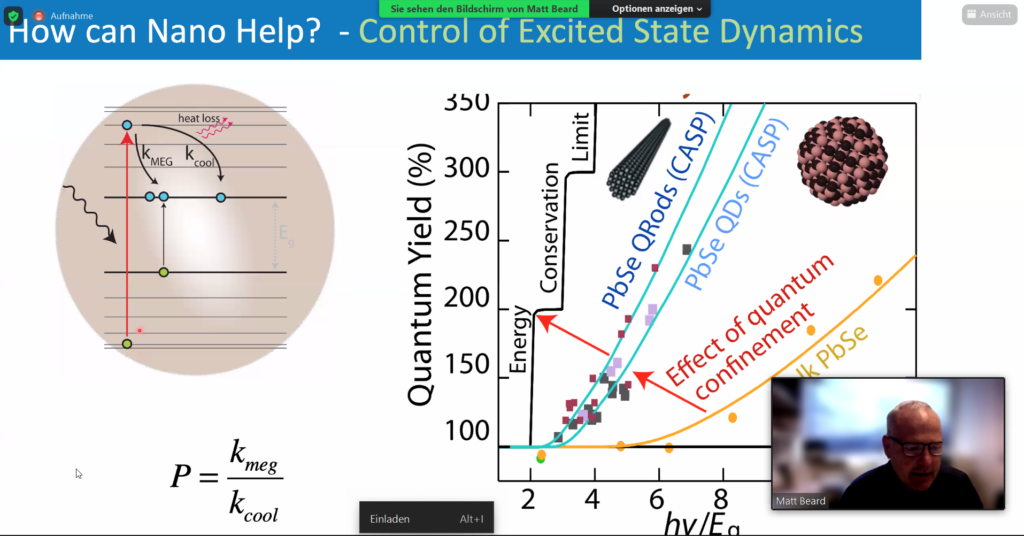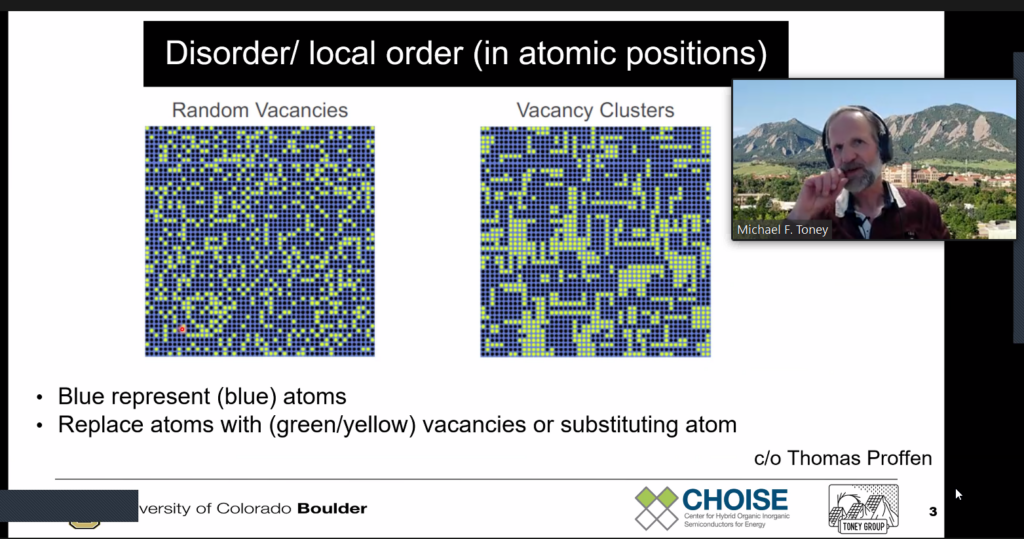NGSE6 – Session 2 – Hot Electrons, Singlet Fission and Disorder
The second session of the NGSE6 is opened by Prof. Arthur Nozik with a talk titled „Ultra-High Efficiencies for Converting Solar Photons into Photovoltaics and Solar Fuels based on Quantization Effects in Nanostructures and Singlet Fission“. Prof. Nozik starts his talk by reminding the audience that the reduction of CO2, and stopping global warming ist the real motivation for improving photovoltaics. PV has undergone huge cost reductions in the past 50 years. However Solar Fuels is are needed as well, and so far there is no Solar fuel industry existent yet. Subsequently Prof. Nozik turns to the concept of „Hot Electrons“ for generating extra free energy to surpass the Detailed-Balance Limit. Hot electrons are generated by absorbing photons with Energy much larger than the bandgap. The simplest variant for using hot electrons is the multi electron generation. However for this a photon of at least twice the energy of the bandgap is required. Photons with this energy are practically outside the solar spectrum. Quantum dots are a solution to this problem, since here momentum does not need to be conserved, only energy conservation must be conserved. In principle this can increase the Detailed-Balance limit significantly. To go beyond the state of the art Prof. Nozik recommends Multiple Exciton Generation (MEG) and or Singlet Fission in combination with solar concentration in buried junction cells for Dual-Photosystems in optical series!

Prof. Matt Beard from the University of Colorado Boulder continues on the discourse on Multi Exciton Generation through the utilization of novel nanoparticle structures for solar fuel generation. In his contribution “MEG in Colloidal Quantum Dots: Janus Heterostructures and Applications Towards Solar Fuels” he reports about the use of colloidal quantum dots to explore their use for reaching the energy conservation limit for Multi-Exciton generation processes. Prof. Beard shows that size is a critical parameter for increasing MEG-Efficiency. However so far the practical improvements are very small, unless concentration of sunlight is employed. Further improvement is possible with Heterostructures because they allow for much greater Coulomb interactions. Prof. Beard concludes that MEG is a viable way to increase solar-to-energy conversion efficienccy. His group finds that asymmetric nanostructures perform better than spherical structures and show that MEG can be observed both in photocurrent and solar fuel production, while concentration has a significant impact for increasing efficiency.

In the last contribution of the day Prof. Mike Toney, also from the University of Colorado Boulder switches gears to the subject of disorder in his presentation titled: “Static and dynamic local order in metal halide perovskites”. He starts into the subject by investigating the notion of order and disorder. For MHPs there is a dynamic disorder which is different from typical semiconductors. He finds that the impact of local order on the physical properties of materials is underappreciated. Through advances in instrumentation in the past years it has become possible to measure single crystal diffuse scattering over large volumes of reciprocal space, while it remains a challenge to obtain large enough single crystals for measurements APS-U allows to measure smaller single crystals of ca. 10µm size. This is a great opportunity to better understand static and dynamic local order and its impact on functionality.

